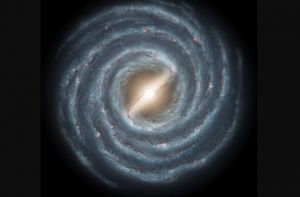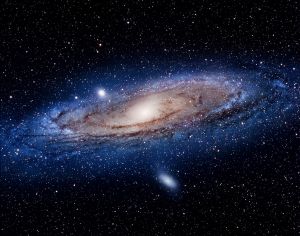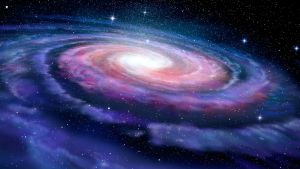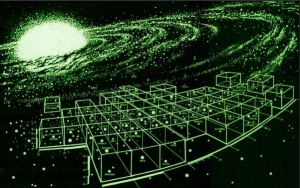Milky Way Galaxy
The Milky Way Galaxy is a large barred spiral galaxy that is approximately 100,000 light years in diameter, and contains over 400 billion stars. The galaxy is composed of three major parts:
- Galactic core contains a supermassive black hole called Sagittarius A
- Disc is the ring of stars and interstellar dust that gives the galaxy its spiral shape
- Halo includes many older stars orbiting the core, but outside the disc, of which most are concentrated in massive globular clusters
The Milky Way's disc is surrounded by a massive barrier of unknown origin, which for a long time prevented most travel into and out of the galaxy. The core is also surrounded by a similar force field called the Great Barrier, which is very difficult to penetrate.
In the science of stellar cartography, the Milky Way is divided into four major areas called quadrants: Alpha, Beta, Gamma and Delta, each of which compose one-quarter of the galaxy. Between 2064 and 2364, Humans had charted 11% of the galaxy. By 2267, there were Humans on a thousand planets in the galaxy. By 2268, research expeditions of the Federation had catalogued hundreds of uninhabited planets suitable for colonization.
Only one out of every 43,000 planets in the galaxy supports intelligent lifeforms. According to Dr. Leonard McCoy, there is a mathematical probability of three million Class M planets in the galaxy.



